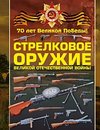
-
 Anglický jazyk
Anglický jazyk
Paleo-Asian and Samoyed people
Autor: Andrey Tikhomirov
Paleo-Asian Peoples (from Greek Paleo - ancient, part of the complex words indicating a connection with antiquity, i.e., ancient Asian) - the name of the indigenous population of North and North-East Siberia, Alaska, Canada and Greenland, as well as Sakhalin,... Viac o knihe
Na objednávku
24.93 €
bežná cena: 27.70 €
O knihe
Paleo-Asian Peoples (from Greek Paleo - ancient, part of the complex words indicating a connection with antiquity, i.e., ancient Asian) - the name of the indigenous population of North and North-East Siberia, Alaska, Canada and Greenland, as well as Sakhalin, the Aleutian, Kuril and Japanese Islands. Paleoasian peoples include the extinct cats, Arins, Asanas; and Eskimos, Aleuts, and Ainu. The term "Paleo-Asian peoples", or "territorial peoples", was introduced in the middle of the 19th century by the Russian academician L.I. Shrenk to denote the peoples of Northern Asia (mostly suburbs), which are the remnants of the oldest population of the country, whose languages are not included into any of the known language groups. The Samoyedic peoples, together with the Finno-Ugric peoples, are part of the Uralic language family. Samoyedic languages, the family (according to other classifications, a group) of languages are part of the genetic community of Uralic languages. It includes languages: Nenets, Enets, Nganasan, Selkup, almost extinct Kamasin, extinct Motor, Karagas and Taiga. Samoyedians, Ustar. - Samoyeds, (annalistic - samoyad) (from sam-Eemne, in Sami language - land of the Sami).
- Vydavateľstvo: Our Knowledge Publishing
- Rok vydania: 2020
- Formát: Paperback
- Rozmer: 220 x 150 mm
- Jazyk: Anglický jazyk
- ISBN: 9786200975379






 Ruský jazyk
Ruský jazyk 





